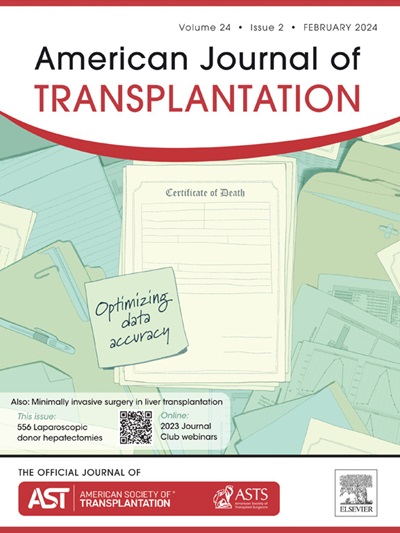OPTN/SRTR 2023 Annual Data Report: Heart
IF 8.9
2区 医学
Q1 SURGERY
引用次数: 0
Abstract
Despite unintended consequences and ongoing need for revision, the 2018 adult heart transplant policy revision continues to have a favorable impact as evidenced by increased transplant rates, decreased waitlist mortality, and more rapid transplant in higher acuity patients. In 2023, the total number of heart transplants in the United States increased 101.1% since 2012, reaching a record 4,599, of which 4,092 were performed in adults. Between 2022 and 2023 alone, 424 more adult heart transplants were performed, the largest annual increase this decade. Concurrently, the prevalence of heart donors after circulatory death increased to 14.0% in 2023. Candidates listed at adult statuses 1 and 2 underwent transplant more quickly (2,225.8 and 1,088.1 transplants per 100 patient-years, respectively). In 2023, adult waitlist mortality reached a low: 8.5 deaths per 100 patient-years. Multiorgan transplants (heart-liver and heart-kidney) in adults continue to increase, achieving comparable survival to that of heart transplant alone. Adults with congenital heart disease had the lowest pretransplant mortality of all diagnoses but also the lowest posttransplant survival, 76.1% at 5 years, emphasizing the need for consensus on best practices. In pediatric heart transplant, heart transplants increased 36.3% and new listings increased 34.0%, but the transplant rate decreased 14.9% resulting in increased waiting times. High-urgency listings increased, with 83.6% of heart transplants performed for status 1A. Pediatric waitlist mortality has declined 53.4% since 2012, but remains substantial: 11.7 deaths per 100 patient-years. In 2023, 5-year posttransplant survival was 80.3% in adult recipients and 84.4% in pediatric recipients.

求助全文
约1分钟内获得全文
求助全文
来源期刊
CiteScore
18.70
自引率
4.50%
发文量
346
审稿时长
26 days
期刊介绍:
The American Journal of Transplantation is a leading journal in the field of transplantation. It serves as a forum for debate and reassessment, an agent of change, and a major platform for promoting understanding, improving results, and advancing science. Published monthly, it provides an essential resource for researchers and clinicians worldwide.
The journal publishes original articles, case reports, invited reviews, letters to the editor, critical reviews, news features, consensus documents, and guidelines over 12 issues a year. It covers all major subject areas in transplantation, including thoracic (heart, lung), abdominal (kidney, liver, pancreas, islets), tissue and stem cell transplantation, organ and tissue donation and preservation, tissue injury, repair, inflammation, and aging, histocompatibility, drugs and pharmacology, graft survival, and prevention of graft dysfunction and failure. It also explores ethical and social issues in the field.

 求助内容:
求助内容: 应助结果提醒方式:
应助结果提醒方式:


